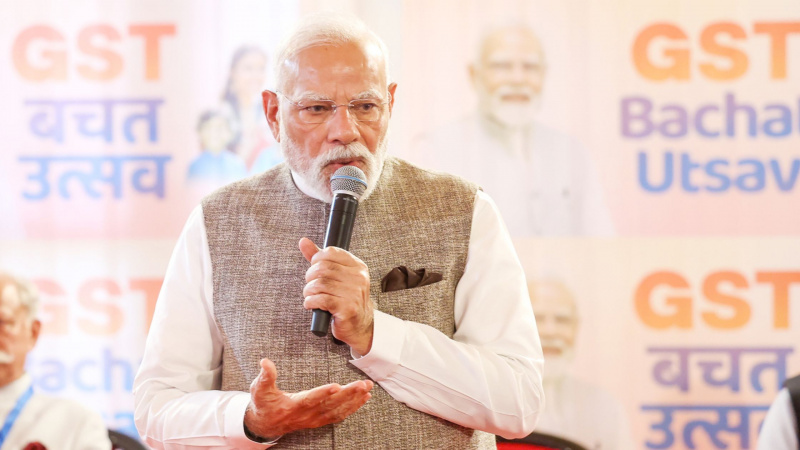Digital Rupee and Cashless Economy- All You Need to Know
CBDCs will be structured in such a way that they can be tracked by central banks, as opposed to the anonymity of currency. The elimination of a costly network o
- by B2B Desk 2022-04-19 09:54:01
Finance Minister Nirmala Sitharaman revealed in the Union Budget that the government was considering implementing its own Central Bank Digital Currency (CBDC) by 2023, or in India's instance, a digital rupee. The declaration appeared to most observers to be a sort of gatekeeper. After all, what is the use of a CBDC in India at this point, when basic financial inclusion, let alone digital banking, has yet to reach the masses.
According to a BIS poll of central banks performed in 2021, 86% of the institutions were actively researching the potential for CBDCs, while 60% were experimenting with the technology and 14% were executing trial programmes. It should be noted that, with the exception of China, no other large economy has performed comprehensive trials on CBDC implementation. Singapore, which had been hot on China's tail, appears to have put its intentions to issue a CBDC on hold. Sweden, interestingly, was thought to be seriously considering issuing its own CBDC, an e-krona. A CBDC provided the perfect justification for many central banks to move to a more acceptable form of electronic currency as the use of paper currency declined. When comparing the scenarios in India and Sweden, bank notes still account for 15% of the money supply in India, whereas they account for only 1.5 percent in Sweden. Despite having floated the notion for more than five years, the Riksbank of the Scandinavian nation is not moving forward on this front.

CBDCs will be structured in such a way that they can be tracked by central banks, as opposed to the anonymity of currency. The elimination of a costly network of intermediaries or correspondent banks that facilitate cross-border transfers could also be on the government's radar. Sending remittances home to Indian individuals working overseas could become more cost-effective and easier as a result of this. Apart from that, conversion of rupees to dollars and vice versa could be easier in international business/e-commerce.
The other argument is that India, which is the world's biggest recipient of remittances, might save a lot of money if it routes its transactions through the Nexus project, which is a worldwide network proposed by the Bank for International Settlements, rather than using a digital rupee. India's projected roll-out of its own CBDC, according to crypto specialists, is in response to the enormous acceptance of private cryptocurrencies by millions of Indian consumers. However, it is unclear how the government will persuade private crypto users to use the CBDC issued by the RBI.

The digital rupee could be used for a variety of purposes, including programmable payments for subsidies and speedier lending and payments by financial institutions. There is also a case to be made in favour of CBDCs because they may help to increase financial inclusion among those who do not yet have access to the banking system but are aware of it owing to cell phones. For all intents and purposes, the CBDC might herald a realistic transition to a cashless economy, which was already underway following demonetisation.
Stakeholders continue to believe that the government should take things slowly when it comes to implementing the digital rupee. India should ideally follow the lead of mature economies, which have developed a multi-year strategy for the adoption of digital currencies that considers all risk considerations, including payment system governance and police what is legal and what is not.
Also Read: India's sugar exports have increased by 291% since 2013-14, and grown by 64.90% in 2021-22

POPULAR POSTS
The Agentic Revolution: Why Salesforce Is Betting Its Future on AI Agents
by Shan, 2025-11-05 10:29:23
OpenAI Offers ChatGPT Go Free in India: What’s Behind This Big AI Giveaway?
by Shan, 2025-10-28 12:19:11
Zoho Products: Complete List, Launch Years, and What Each One Does
by Shan, 2025-10-13 12:11:43
Arattai vs WhatsApp: Which Messaging App Should You Choose in 2025?
by Shan, 2025-10-10 11:55:06
Top Buy Now Pay Later (BNPL) Apps for Easy Shopping in 2025
by Shan, 2025-09-22 10:56:23
iPhone 17 Sale in India Begins: Full Price List, Launch Offers and Store Availability
by Shan, 2025-09-19 12:00:45
Apple September 2025 Event Recap: iPhone 17, iPhone Air, Apple Watch Series 11, and India Pricing Revealed
by Shan, 2025-09-10 09:55:45
RECENTLY PUBLISHED

Loan EMIs to Drop as RBI Slashes Repo Rate - Full MPC December 2025 Highlights
- by Shan, 2025-12-05 11:49:44

Pine Labs IPO 2025: Listing Date, Grey Market Premium, and Expert Outlook
- by Shan, 2025-11-05 09:57:07

Top 10 Insurance Companies in India 2026: Life, Health, and General Insurance Leaders Explained
- by Shan, 2025-10-30 10:06:42

Best Silver Investment Platforms for 2025: From CFDs to Digital Vaults Explained
- by Shan, 2025-10-23 12:22:46

Zoho Mail vs Gmail (2025): Which Email Platform Is Best for Businesses, Startups, and Students?
- by Shan, 2025-10-09 12:17:26

PM Modi Launches GST Bachat Utsav: Lower Taxes, More Savings for Every Indian Household
- by Shan, 2025-09-24 12:20:59




 Subscribe now
Subscribe now 